An Integrated Framework for the Quantification of Road Network Seismic Vulnerability and Accessibility to Critical Services
Abstract
:1. Introduction

2. Integrated Framework for Road Network Vulnerability Assessment
2.1. Stage 1: Seismic Vulnerability Index (SVI) for Road Networks and Their Assets
2.1.1. Selected Modelled Parameters
- P1: embankments.
- P2: pavement
- P3: ground condition
- P4: road width
2.1.2. Weighting Modelled Parameters Using NLDA
- IDA curve for selected ground motion records
- Probabilistic damage distribution functions
2.1.3. Vulnerability Classification
2.2. Stage 2: Traffic Disruption Assessment Method
2.3. Stage 3: Building Transport Performance Maps
3. Case Study
4. Results and Discussion
4.1. Incremental Dynamic Analysis (IDA)
4.2. Assessment of Resistance for Roadway System by Conducting Fragility Functions
4.3. Seismic Vulnerability Index (SVI)
4.3.1. Weighting of Identified Parameters
4.3.2. Validation of the Seismic Vulnerability Index (SVI) Assessment Method
4.3.3. Calculation of the Seismic Vulnerability Index (SVI) Scores
4.4. Seismic Vulnerability Index (SVI)
- Traffic disruption approach for road network
Traffic Disruption Approach for Main Districts (Accessibility of Areas)
5. Conclusions
Author Contributions
Funding
Conflicts of Interest
References
- Freddi, F.; Galasso, C.; Cremen, G.; Dall’Asta, A.; Di Sarno, L.; Giaralis, A.; Gutiérrez-Urzúa, F.; Málaga-Chuquitaype, C.; Mitoulis, S.A.; Petrone, C. Innovations in earthquake risk reduction for resilience: Recent advances and challenges. Int. J. Disaster Risk Reduct. 2021, 60, 102267. [Google Scholar] [CrossRef]
- Quagliarini, E.; Bernardini, G.; Santarelli, S.; Lucesoli, M. Evacuation paths in historic city centres: A holistic methodology for assessing their seismic risk. Int. J. Disaster Risk Reduct. 2018, 31, 698–710. [Google Scholar] [CrossRef]
- Argyroudis, S.A.; Mitoulis, S.A.; Winter, M.G.; Kaynia, A.M. Fragility of transport assets exposed to multiple hazards: State-of-the-art review toward infrastructural resilience. Reliab. Eng. Syst. Saf. 2019, 191, 106567. [Google Scholar] [CrossRef]
- Eidsvig, U.; Tanasic, N.; Hajdin, R.; Ekeheien, C.; Piciullo, L. Vulnerability of terrestrial transportation lines to natural events. In EGU General Assembly Conference Abstracts; Austria Center Vienna: Veinna, Austria, 2020; p. 9542. [Google Scholar]
- Chang, S.E. Transportation planning for disasters: An accessibility approach. Environ. Plan. A 2003, 35, 1051–1072. [Google Scholar] [CrossRef]
- D’este, G.A.; Taylor, M.A. Network Vulnerability: An Approach to Reliability Analysis at the Level of National Strategic Transport Networks; Emerald Group Publishing Limited: Bingley, UK, 2003. [Google Scholar]
- Davidson, K.B. Accessibility in transport/land-use modelling and assessment. Environ. Plan. A 1977, 9, 1401–1416. [Google Scholar] [CrossRef]
- Hansen, W.G. How accessibility shapes land use. J. Am. Inst. Plan. 1959, 25, 73–76. [Google Scholar] [CrossRef]
- Luathep, P.; Sumalee, A.; Ho, H.; Kurauchi, F. Large-scale road network vulnerability analysis: A sensitivity analysis based approach. Transportation 2011, 38, 799–817. [Google Scholar] [CrossRef]
- Maltinti, F.; Melis, D.; Annunziata, F. Road network vulnerability: A review of the literature. In ICSDC 2011: Integrating Sustainability Practices in the Construction Industry; ASCE: Kansas City, MO, USA, 2012; pp. 677–685. [Google Scholar]
- Taylor, M.A. Critical transport infrastructure in Urban areas: Impacts of traffic incidents assessed using accessibility-based network vulnerability analysis. Growth Chang. 2008, 39, 593–616. [Google Scholar] [CrossRef]
- Balijepalli, C.; Oppong, O. Measuring vulnerability of road network considering the extent of serviceability of critical road links in urban areas. J. Transp. Geogr. 2014, 39, 145–155. [Google Scholar] [CrossRef]
- Chen, B.Y.; Lam, W.H.; Sumalee, A.; Li, Q.; Li, Z.-C. Vulnerability analysis for large-scale and congested road networks with demand uncertainty. Transp. Res. Part A Policy Pract. 2012, 46, 501–516. [Google Scholar] [CrossRef]
- Elnashai, A.S.; Borzi, B.; Vlachos, S. Deformation-based vulnerability functions for RC bridges. Struct. Eng. Mech. 2004, 17, 215–244. [Google Scholar] [CrossRef]
- Francini, M.; Gaudio, S.; Palermo, A.; Viapiana, M.F. A performance-based approach for innovative emergency planning. Sustain. Cities Soc. 2020, 53, 101906. [Google Scholar] [CrossRef]
- Huang, Q.; Gardoni, P.; Hurlebaus, S. A probabilistic damage detection approach using vibration-based nondestructive testing. Struct. Saf. 2012, 38, 11–21. [Google Scholar] [CrossRef]
- Muntasir Billah, A.; Shahria Alam, M. Seismic fragility assessment of highway bridges: A state-of-the-art review. Struct. Infrastruct. Eng. 2015, 11, 804–832. [Google Scholar] [CrossRef]
- Nagurney, A.; Qiang, Q. A transportation network efficiency measure that captures flows, behavior, and costs with applications to network component importance identification and vulnerability. In Proceedings of the POMS 18th Annual Conference, Dallas, TX, USA, 4–7 May 2007; Volume 4. [Google Scholar]
- Rupi, F.; Bernardi, S.; Rossi, G.; Danesi, A. The evaluation of road network vulnerability in mountainous areas: A case study. Netw. Spat. Econ. 2015, 15, 397–411. [Google Scholar] [CrossRef]
- Taylor, M.A.; Sekhar, S.V.; D’Este, G.M. Application of accessibility based methods for vulnerability analysis of strategic road networks. Netw. Spat. Econ. 2006, 6, 267–291. [Google Scholar] [CrossRef]
- Zanini, M.A.; Pellegrino, C.; Morbin, R.; Modena, C. Seismic vulnerability of bridges in transport networks subjected to environmental deterioration. Bull. Earthq. Eng. 2013, 11, 561–579. [Google Scholar] [CrossRef]
- Andreotti, G.; Lai, C.G. Use of fragility curves to assess the seismic vulnerability in the risk analysis of mountain tunnels. Tunn. Undergr. Space Technol. 2019, 91, 103008. [Google Scholar] [CrossRef]
- Argyroudis, S.; Kaynia, A.M. Fragility functions of highway and railway infrastructure. In SYNER-G: Typology Definition and Fragility Functions for Physical Elements at Seismic Risk; Springer: Berlin/Heidelberg, Germany, 2014; pp. 299–326. [Google Scholar]
- Ghosh, J.; Padgett, J.E.; Sánchez-Silva, M. Seismic damage accumulation in highway bridges in earthquake-prone regions. Earthq. Spectra 2015, 31, 115–135. [Google Scholar] [CrossRef]
- Kaynia, A.; Mayoral, J.; Johansson, J.; Argyroudis, S.; Pitilakis, K.; Anastasiadis, A. Fragility functions for roadway system elements. SYNER-G Proj. Deliv. 2011, 3, 109. Available online: http://www.vce.at/SYNER-G/files/dissemination/deliverables.html (accessed on 15 September 2022).
- Maruyama, Y.; Yamazaki, F.; Mizuno, K.; Tsuchiya, Y.; Yogai, H. Fragility curves for expressway embankments based on damage datasets after recent earthquakes in Japan. Soil Dyn. Earthq. Eng. 2010, 30, 1158–1167. [Google Scholar] [CrossRef]
- Nielson, B.G.; DesRoches, R. Analytical seismic fragility curves for typical bridges in the central and southeastern United States. Earthq. Spectra 2007, 23, 615–633. [Google Scholar] [CrossRef]
- Stefanidou, S.P.; Kappos, A.J. Methodology for the development of bridge-specific fragility curves. Earthq. Eng. Struct. Dyn. 2017, 46, 73–93. [Google Scholar] [CrossRef]
- Adafer, S.; Bensaibi, M. Seismic vulnerability classification of roads. Energy Procedia 2017, 139, 624–630. [Google Scholar] [CrossRef]
- Djemai, M.; Bensaibi, M.; Zellat, K. Seismic vulnerability assessment of bridges using analytical hierarchy process. IOP Conf. Ser. Mater. Sci. Eng. 2019, 615, 012106. [Google Scholar]
- Werner, S.D.; Taylor, C.E.; Cho, S.; Lavoie, J.-P.; Huyck, C.K.; Eitzel, C.; Chung, H.; Eguchi, R.T. Redars 2 Methodology and Software for Seismic Risk Analysis of Highway Systems; US Department of Transportation Federal Highway Administration: Washington, DC, USA, 2006.
- Winter, M.; Smith, J.; Fotopoulou, S.; Pitilakis, K.; Mavrouli, O.; Corominas, J.; Argyroudis, S. An expert judgement approach to determining the physical vulnerability of roads to debris flow. Bull. Eng. Geol. Environ. 2014, 73, 291–305. [Google Scholar] [CrossRef]
- El-Maissi, A.M.; Argyroudis, S.A.; Nazri, F.M. Seismic vulnerability assessment methodologies for roadway assets and networks: A state-of-the-art review. Sustainability 2020, 13, 61. [Google Scholar] [CrossRef]
- Bocchini, P.; Frangopol, D.M. Connectivity-based optimal scheduling for maintenance of bridge networks. J. Eng. Mech. 2013, 139, 760–769. [Google Scholar] [CrossRef]
- Morbin, R.; Zanini, M.; Pellegrino, C.; Zhang, H.; Modena, C. A probabilistic strategy for seismic assessment and FRP retrofitting of existing bridges. Bull. Earthq. Eng. 2015, 13, 2411–2428. [Google Scholar] [CrossRef]
- Argyroudis, S.A.; Mitoulis, S.A.; Hofer, L.; Zanini, M.A.; Tubaldi, E.; Frangopol, D.M. Resilience assessment framework for critical infrastructure in a multi-hazard environment: Case study on transport assets. Sci. Total Environ. 2020, 714, 136854. [Google Scholar] [CrossRef]
- O’Reilly, G.J.; Perrone, D.; Fox, M.; Monteiro, R.; Filiatrault, A. Seismic assessment and loss estimation of existing school buildings in Italy. Eng. Struct. 2018, 168, 142–162. [Google Scholar] [CrossRef]
- Kassem, M.M.; Nazri, F.M.; Farsangi, E.N. The seismic vulnerability assessment methodologies: A state-of-the-art review. Ain Shams Eng. J. 2020, 11, 849–864. [Google Scholar] [CrossRef]
- Zanini, M.A.; Faleschini, F.; Zampieri, P.; Pellegrino, C.; Gecchele, G.; Gastaldi, M.; Rossi, R. Post-quake urban road network functionality assessment for seismic emergency management in historical centres. Struct. Infrastruct. Eng. 2017, 13, 1117–1129. [Google Scholar] [CrossRef]
- Ertugay, K.; Argyroudis, S.; Düzgün, H.Ş. Accessibility modeling in earthquake case considering road closure probabilities: A case study of health and shelter service accessibility in Thessaloniki, Greece. Int. J. Disaster Risk Reduct. 2016, 17, 49–66. [Google Scholar] [CrossRef]
- Li, H.; Zhao, L.; Huang, R.; Hu, Q. Hierarchical earthquake shelter planning in urban areas: A case for Shanghai in China. Int. J. Disaster Risk Reduct. 2017, 22, 431–446. [Google Scholar] [CrossRef]
- Tesfamariam, S.; Saatcioglu, M. Seismic vulnerability assessment of reinforced concrete buildings using hierarchical fuzzy rule base modeling. Earthq. Spectra 2010, 26, 235–256. [Google Scholar] [CrossRef]
- Urbina, E.; Wolshon, B. National review of hurricane evacuation plans and policies: A comparison and contrast of state practices. Transp. Res. Part A Policy Pract. 2003, 37, 257–275. [Google Scholar] [CrossRef]
- Chong, N.O.; Kamarudin, K.H. Disaster risk management in Malaysia: Issues and challenges from the persepctive of agencies. Plan. Malays. 2018, 16. [Google Scholar] [CrossRef]
- Khuzzan, S.M.S.; Mohyin, N.A.; Izuddin, S. Post Disaster Management (PDM) in Malaysia: Issues and Challenges. Adv. Sci. Lett. 2017, 23, 6390–6393. [Google Scholar] [CrossRef]
- Barnes, B.; Dunn, S.; Wilkinson, S. Natural hazards, disaster management and simulation: A bibliometric analysis of keyword searches. Nat. Hazards 2019, 97, 813–840. [Google Scholar] [CrossRef]
- Marinoni, O. Implementation of the analytical hierarchy process with VBA in ArcGIS. Comput. Geosci. 2004, 30, 637–646. [Google Scholar] [CrossRef]
- Rikalovic, A.M.; Cocić, I. GIS based multi-criteria decision analysis for industrial site selection: The state of the art. J. Appl. Eng. Sci. 2014, 12, 197–206. [Google Scholar] [CrossRef] [Green Version]
- Bono, F.; Gutiérrez, E. A network-based analysis of the impact of structural damage on urban accessibility following a disaster: The case of the seismically damaged Port Au Prince and Carrefour urban road networks. J. Transp. Geogr. 2011, 19, 1443–1455. [Google Scholar] [CrossRef]
- Mitoulis, S.A.; Argyroudis, S.A.; Loli, M.; Imam, B. Restoration models for quantifying flood resilience of bridges. Eng. Struct. 2021, 238, 112180. [Google Scholar] [CrossRef]
- Foulser-Piggott, R.; Bowman, G.; Hughes, M. A framework for understanding uncertainty in seismic risk assessment. Risk Anal. 2020, 40, 169–182. [Google Scholar] [CrossRef] [PubMed]
- Kilanitis, I.; Sextos, A. Integrated seismic risk and resilience assessment of roadway networks in earthquake prone areas. Bull. Earthq. Eng. 2019, 17, 181–210. [Google Scholar] [CrossRef]
- Mattsson, L.-G.; Jenelius, E. Vulnerability and resilience of transport systems—A discussion of recent research. Transp. Res. Part A Policy Pract. 2015, 81, 16–34. [Google Scholar] [CrossRef]
- Buratti, G.; Celati, S.; Cosentino, A.; Gaudioso, D.; Mazzatura, I.; Morelli, F.; Salvatore, W. The new guidelines of Italian Ministry of Infrastructures for the structural risk classification of existing bridges: Genesis, examples of application and practical considerations. In Proceedings of the International Conference of the European Association on Quality Control of Bridges and Structures, Padova, Italy, 29 August–1 September 2021; pp. 835–844. [Google Scholar]
- Pellegrino, C.; Faleschini, F.; Zanini, M.A.; Matos, J.C.; Casas, J.R.; Strauss, A. Proceedings of the 1st Conference of the European Association on Quality Control of Bridges and Structures: EUROSTRUCT 2021, Padua, Italy, 29 August–1 September 2021; Springer Nature: Berlin/Heidelberg, Germany, 2021; Volume 200.
- Santarelli, S.; Bernardini, G.; Quagliarini, E.; D’Orazio, M. New indices for the existing city-centers streets network reliability and availability assessment in earthquake emergency. Int. J. Archit. Herit. 2018, 12, 153–168. [Google Scholar]
- Mosoarca, M.; Onescu, I.; Onescu, E.; Anastasiadis, A. Seismic vulnerability assessment methodology for historic masonry buildings in the near-field areas. Eng. Fail. Anal. 2020, 115, 104662. [Google Scholar] [CrossRef]
- Alamanis, N. Failure of Slopes and Embankments Under Static and Seismic Loading. Am. Sci. Res. J. Eng. Technol. Sci. 2017, 35, 95–126. [Google Scholar]
- Caiado, G.; Oliveira, C.; Ferreira, M.A.; Sá, F. Assessing urban road network seismic vulnerability: An integrated approach. In Proceedings of the 15WCEE, Lisbon, Portugal, 24–28 September 2012. [Google Scholar]
- Pitilakis, K.; Argyroudis, S. Seismic vulnerability assessment: Lifelines. In Encyclopedia of Earthquake Engineering; Springer: Berlin/Heidelberg, Germany, 2014. [Google Scholar]
- EC8; Eurocode 8: Design of Structures for Earthquake Resistance—Part 1: General Rules, Seismic Actions and Rules for Buildings. European Standard: Brussels, Belgium, 2004.
- Giuliani, F.; De Falco, A.; Cutini, V. The role of urban configuration during disasters. A scenario-based methodology for the post-earthquake emergency management of Italian historic centres. Saf. Sci. 2020, 127, 104700. [Google Scholar] [CrossRef]
- Zakaria, N.M.; Yusoff, N.I.M.; Hardwiyono, S.; Mohd Nayan, K.A.; El-Shafie, A. Measurements of the stiffness and thickness of the pavement asphalt layer using the enhanced resonance search method. Sci. World J. 2014, 2014, 594797. [Google Scholar] [CrossRef] [PubMed]
- Silva, V.; Akkar, S.; Baker, J.; Bazzurro, P.; Castro, J.M.; Crowley, H.; Dolsek, M.; Galasso, C.; Lagomarsino, S.; Monteiro, R. Current challenges and future trends in analytical fragility and vulnerability modeling. Earthq. Spectra 2019, 35, 1927–1952. [Google Scholar] [CrossRef]
- Vamvatsikos, D.; Cornell, C.A. Direct estimation of the seismic demand and capacity of MDOF systems through incremental dynamic analysis of an SDOF approximation. ASCE J. Struct. Eng. 2005, 131, 589–599. [Google Scholar] [CrossRef] [Green Version]
- Cordova, P.P.; Deierlein, G.G.; Mehanny, S.S.; Cornell, C.A. Development of a two-parameter seismic intensity measure and probabilistic assessment procedure. In Proceedings of the Second US-Japan Workshop on Performance-Based Earthquake Engineering Methodology for Reinforced Concrete Building Structures, Sapporo, Japan, 11–13 September 2000; pp. 187–206. [Google Scholar]
- Shome, N.; Cornell, C.A.; Bazzurro, P.; Carballo, J.E. Earthquakes, records, and nonlinear responses. Earthq. Spectra 1998, 14, 469–500. [Google Scholar] [CrossRef]
- Federal Emergency Management Agency (FEMA) Publications. 750, NEHRP Recommended Seismic Provisions for New Buildings and Other Structures; Building Seismic Safety Council of the National Institute of Building Sciences: Washington, DC, USA, 2009.
- HAZUS-MH, N. Users’s Manual and Technical Manuals. Report Prepared for the Federal Emergency Management Agency; Federal Emergency Management Agency (FEMA): Washington, DC, USA, 2004.
- Ibrahim, Y.E.; El-Shami, M.M. Seismic fragility curves for mid-rise reinforced concrete frames in Kingdom of Saudi Arabia. IES J. Part A Civ. Struct. Eng. 2011, 4, 213–223. [Google Scholar] [CrossRef]
- Argyroudis, S.; Kaynia, A.M. Analytical seismic fragility functions for highway and railway embankments and cuts. Earthq. Eng. Struct. Dyn. 2015, 44, 1863–1879. [Google Scholar] [CrossRef]
- bin Rambat, S.; Shi, Z.; bin Mazlan, S.A. Seismic Vulnerability Assessment in Ranau, Sabah, Using Two Different Models. ISPRS Int. J. Geo-Inf. 2021, 10, 271. [Google Scholar]
- El Maissi, A.M.; Argyroudis, S.A.; Kassem, M.M.; Leong, L.V.; Mohamed Nazri, F. Integrating Intrinsic and Eccentric Seismic Vulnerability Indices to Prioritize Road Network Accessibility. Adv. Civ. Eng. 2022, 2022, 5888020. [Google Scholar] [CrossRef]
- El-Maissi, A.M.; Argyroudis, S.A.; Kassem, M.M.; Nazri, F.M. Development of Intrinsic Seismic Vulnerability Index (ISVI) for Assessing Roadway System and its Assets Framework. MethodsX 2022, 9, 101818. [Google Scholar] [CrossRef]
- Saaty, T.L. A scaling method for priorities in hierarchical structures. J. Math. Psychol. 1977, 15, 234–281. [Google Scholar] [CrossRef]
- Collier, Z.A.; Lambert, J.H.; Linkov, I. Advanced Analytics for Environmental Resilience and a Sustainable Future; Springer: Berlin/Heidelberg, Germany, 2021; Volume 41, pp. 1–2. [Google Scholar]
- Häring, I.; Fehling-Kaschek, M.; Miller, N.; Faist, K.; Ganter, S.; Srivastava, K.; Jain, A.K.; Fischer, G.; Fischer, K.; Finger, J. A performance-based tabular approach for joint systematic improvement of risk control and resilience applied to telecommunication grid, gas network, and ultrasound localization system. Environ. Syst. Decis. 2021, 41, 286–329. [Google Scholar] [CrossRef]
- Naderpajouh, N.; Matinheikki, J.; Keeys, L.A.; Aldrich, D.P.; Linkov, I. Resilience and projects: An interdisciplinary crossroad. Proj. Leadersh. Soc. 2020, 1, 100001. [Google Scholar] [CrossRef]
- Argyroudis, S.A.; Mitoulis, S.A.; Chatzi, E.; Baker, J.W.; Brilakis, I.; Gkoumas, K.; Vousdoukas, M.; Hynes, W.; Carluccio, S.; Keou, O. Digital technologies can enhance climate resilience of critical infrastructure. Clim. Risk Manag. 2022, 35, 100387. [Google Scholar] [CrossRef]
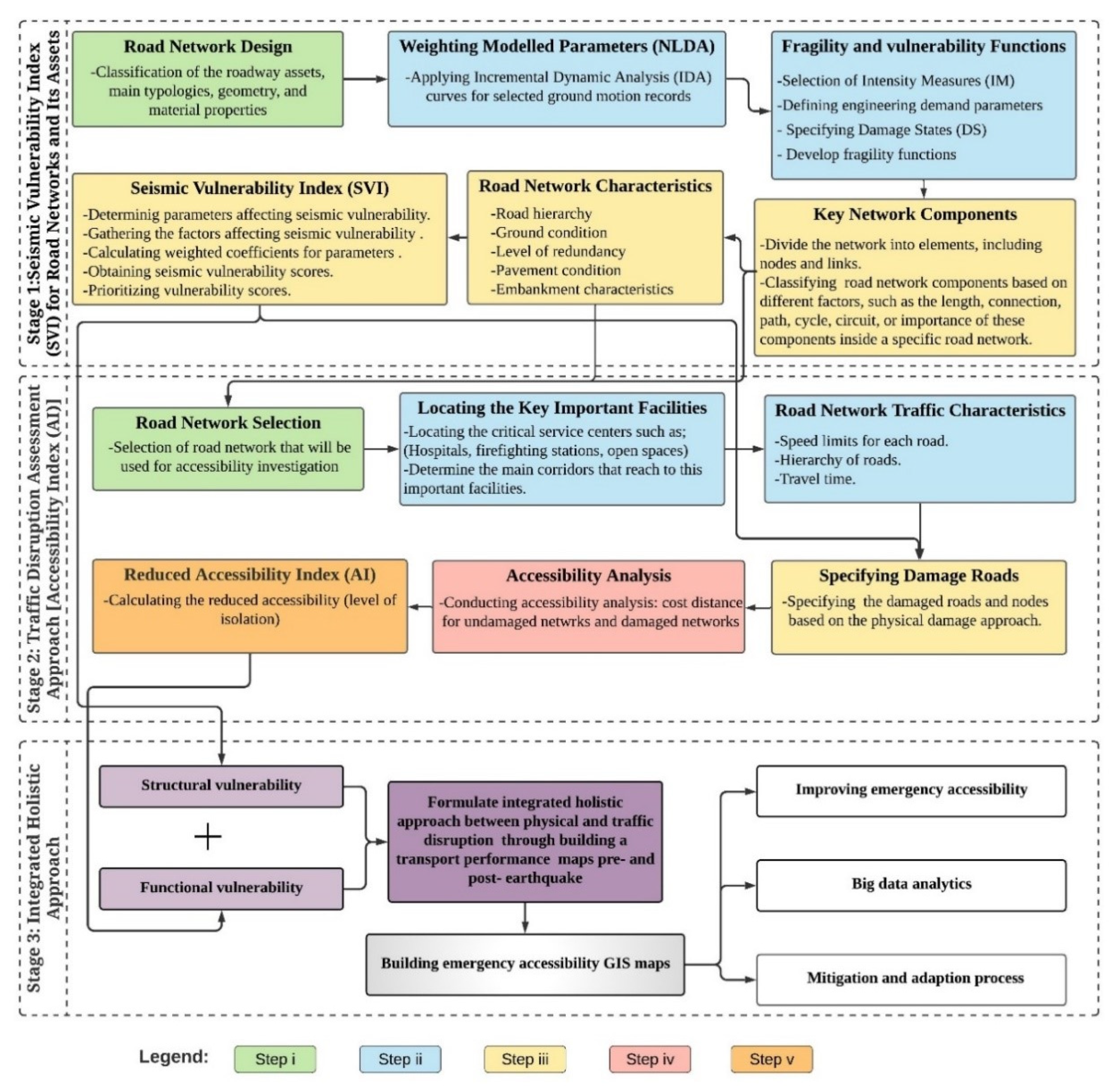
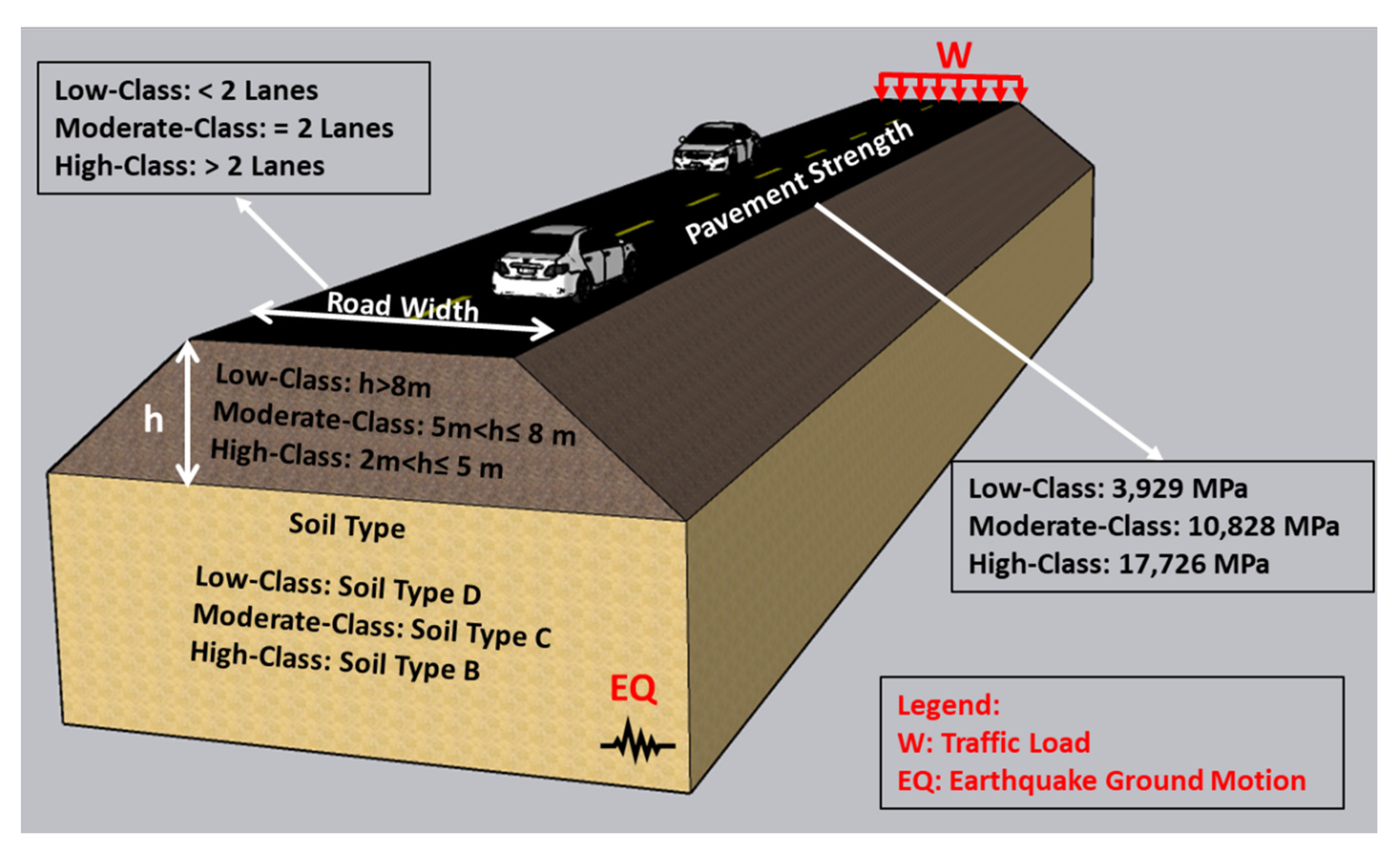
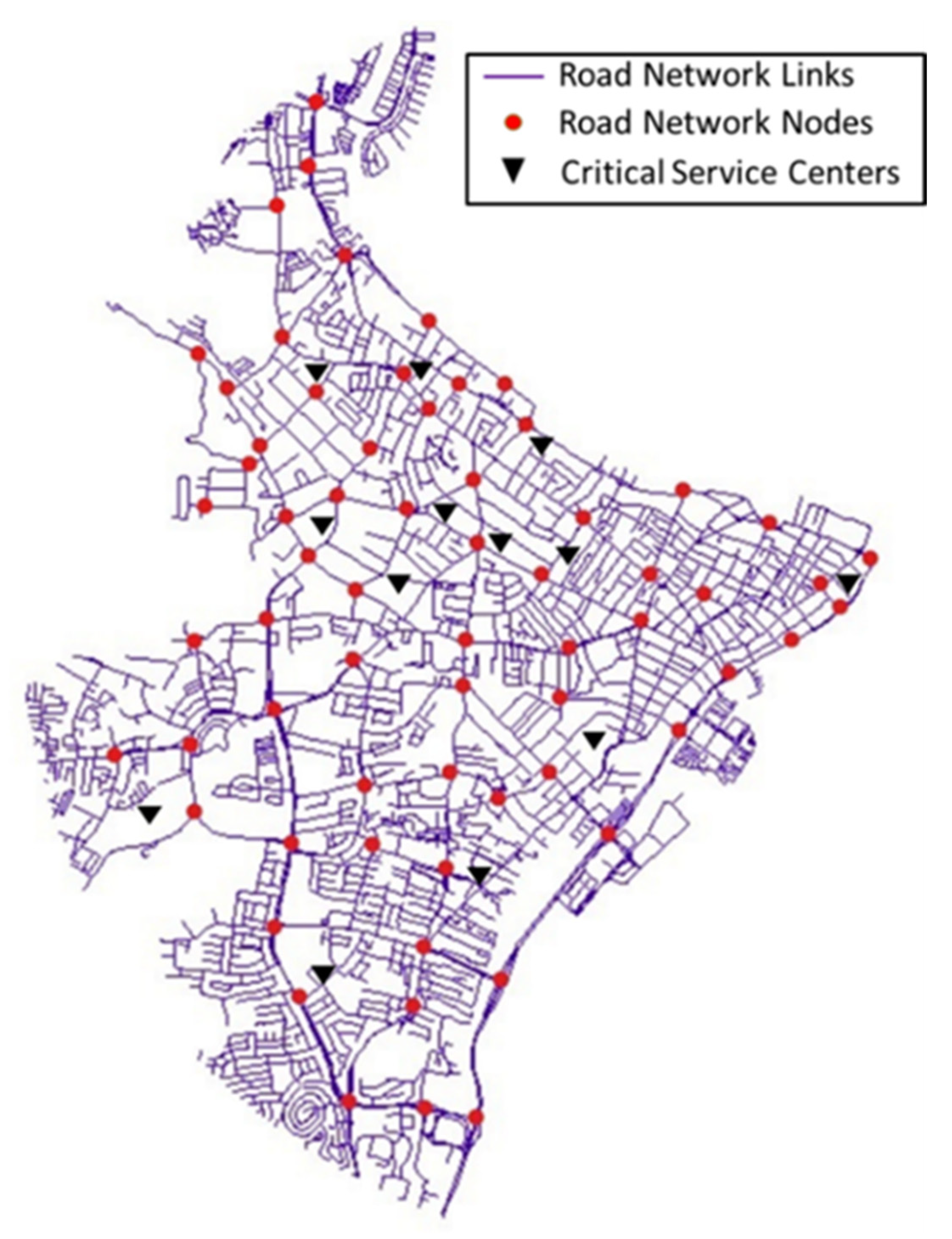
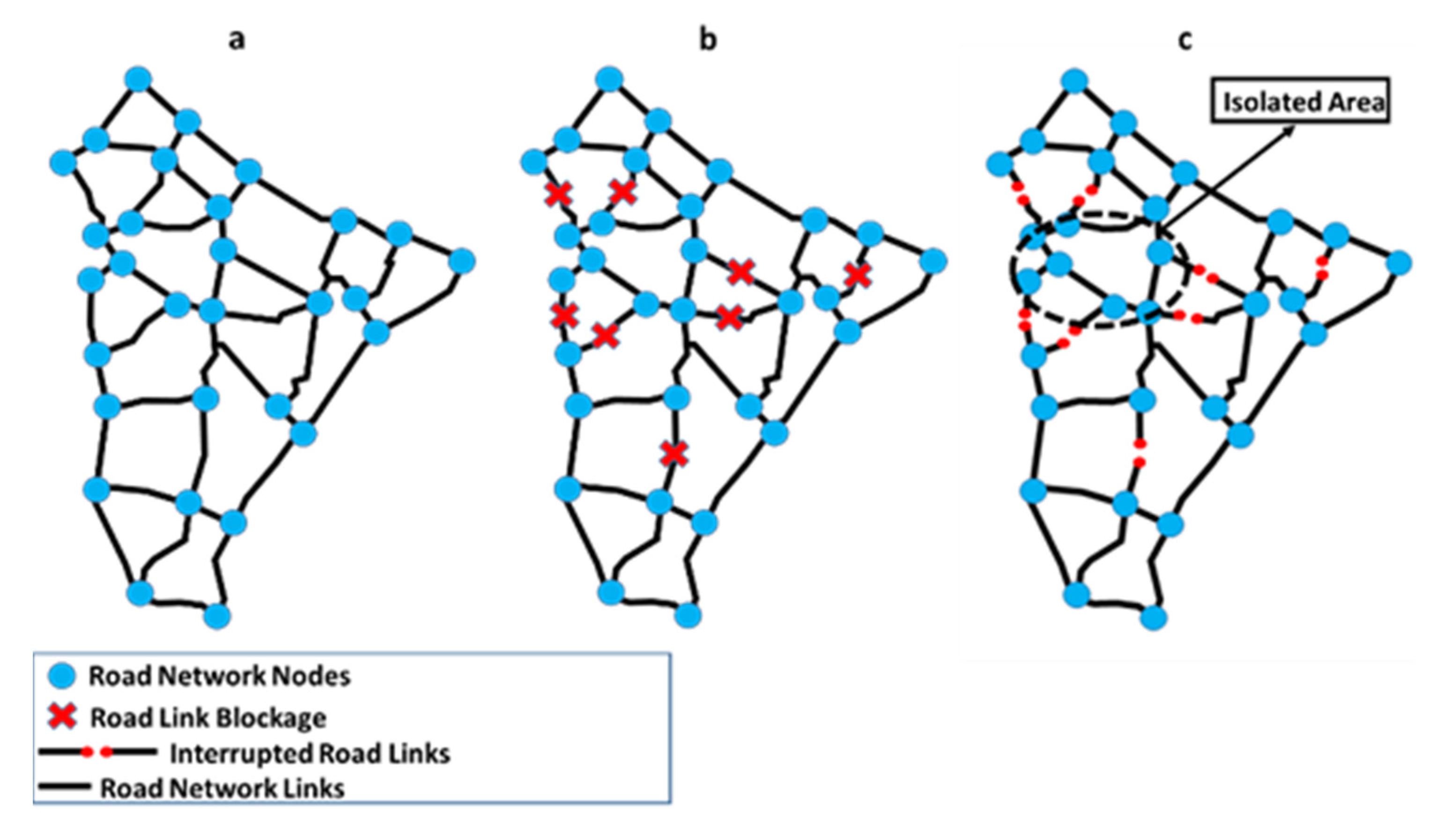


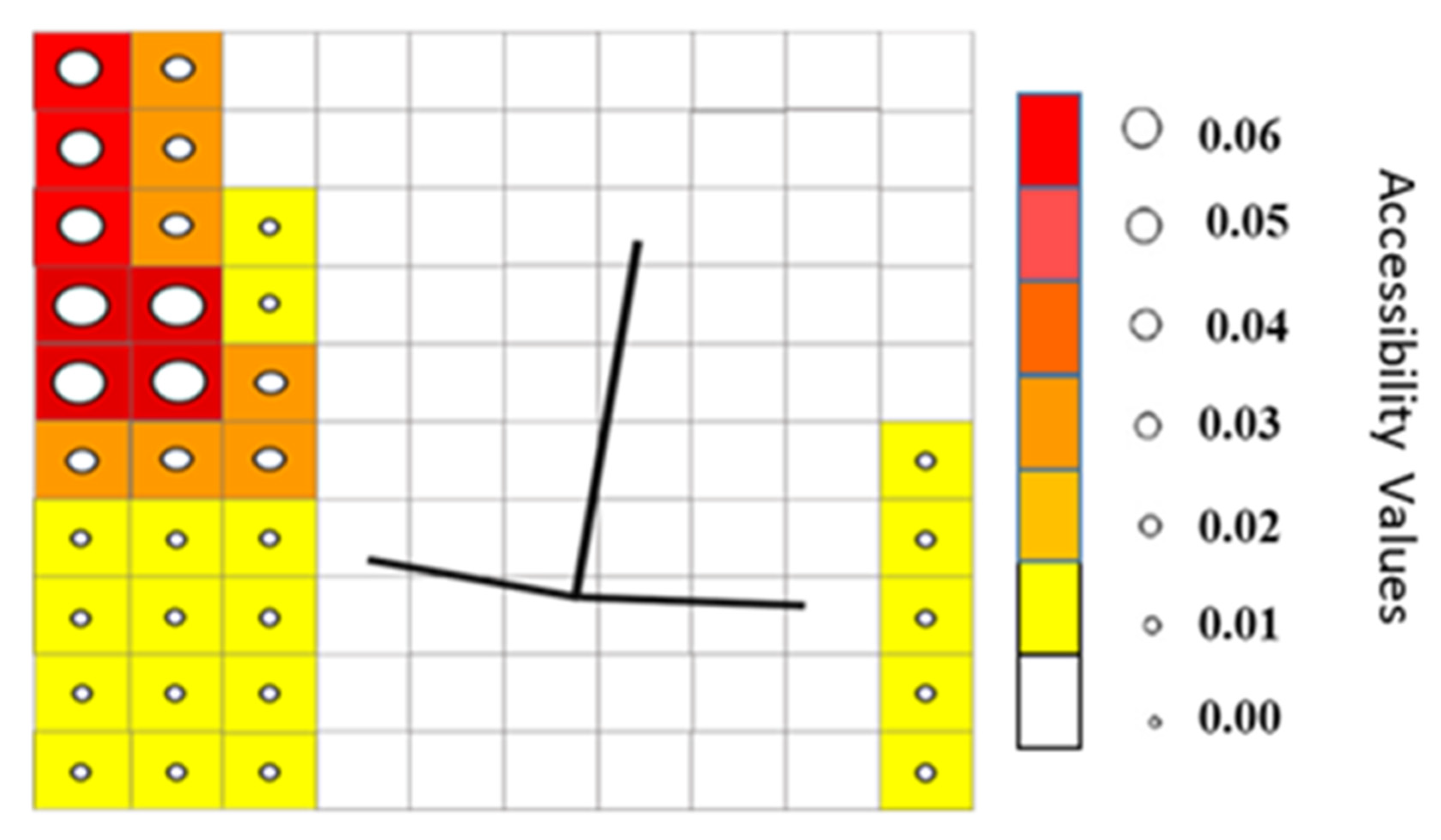

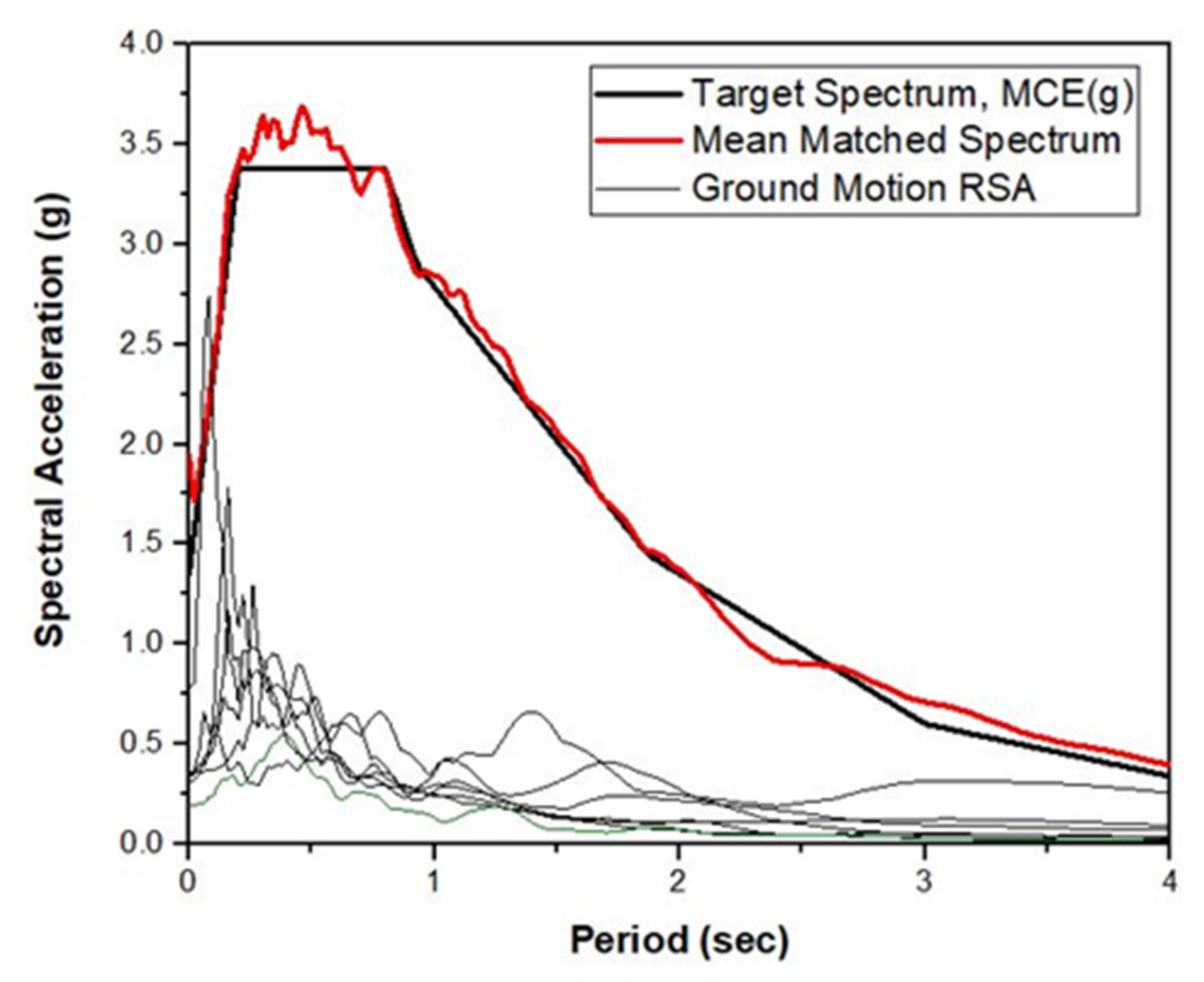

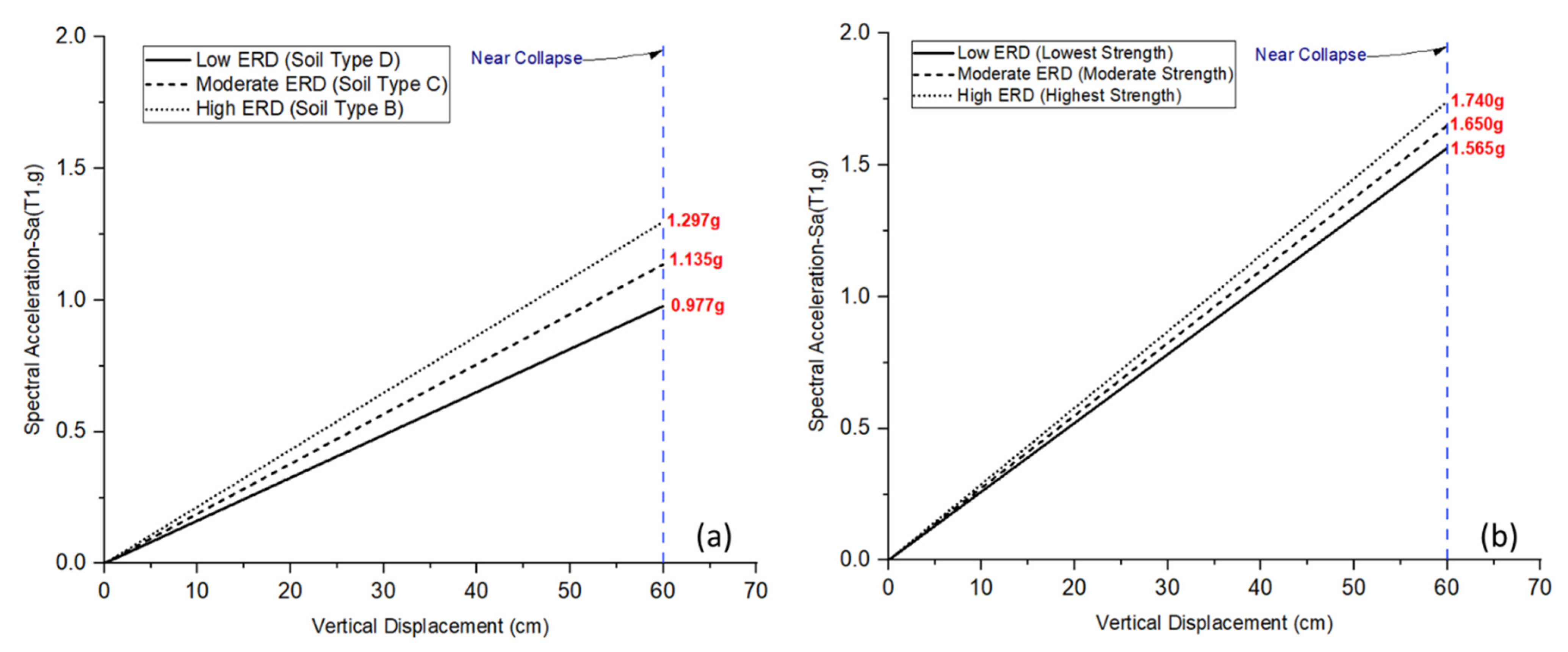
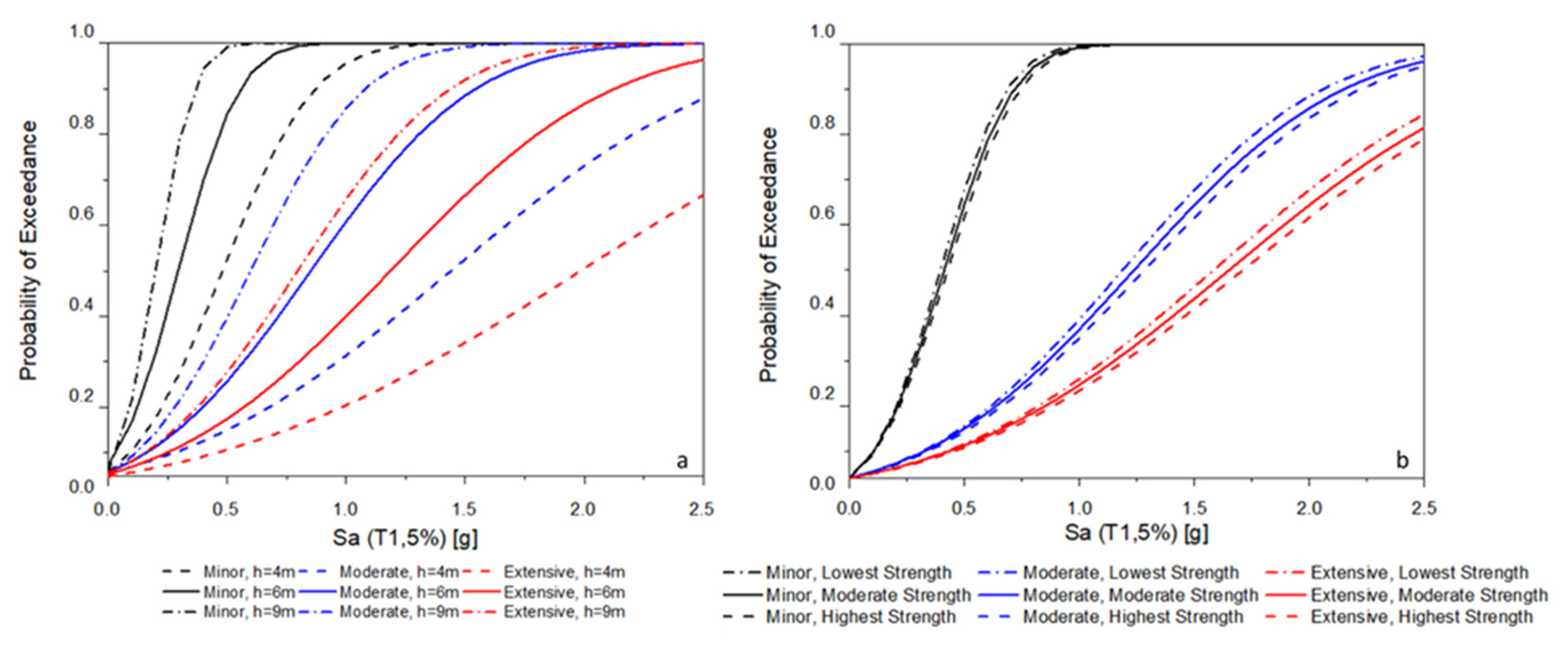

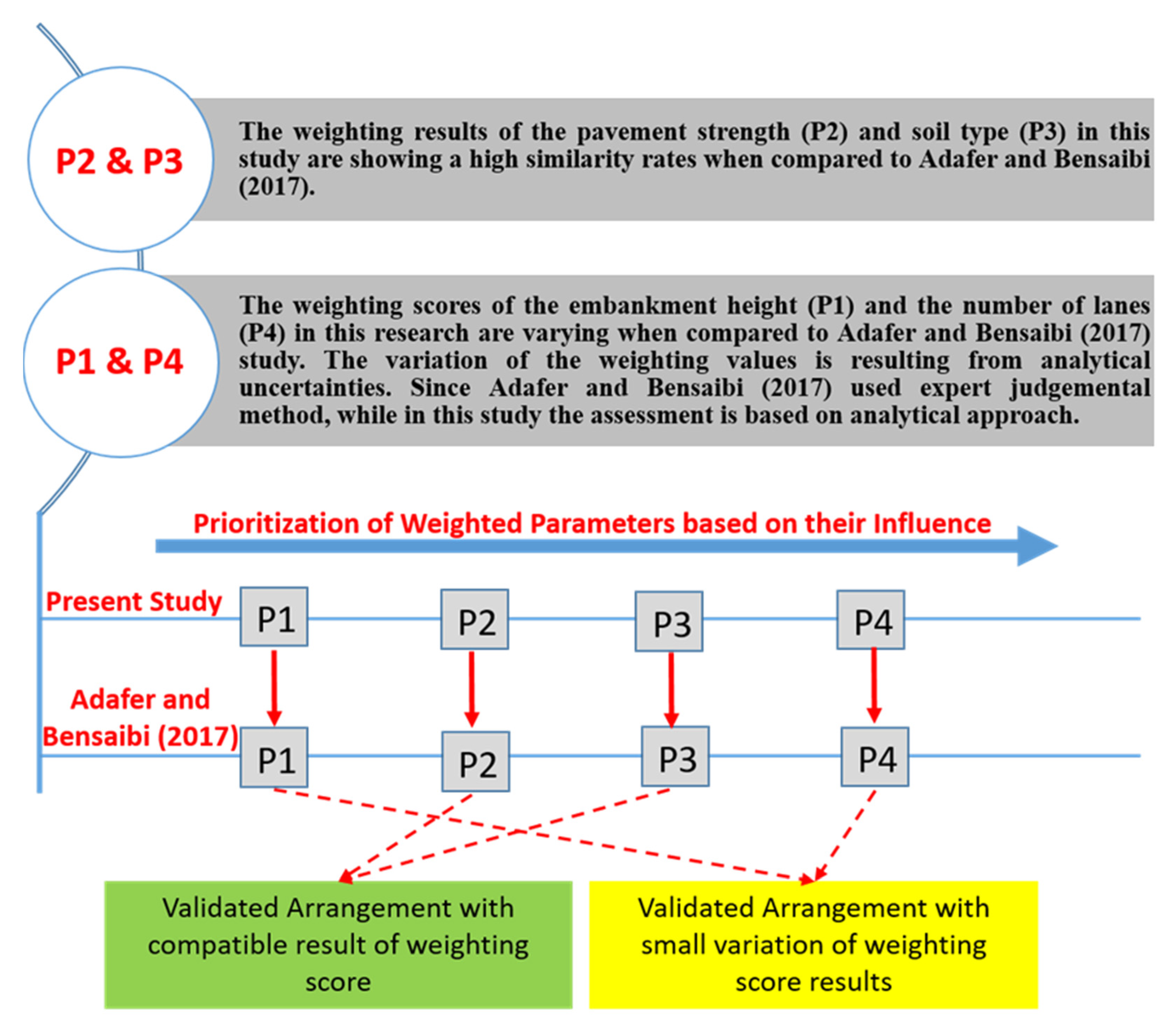
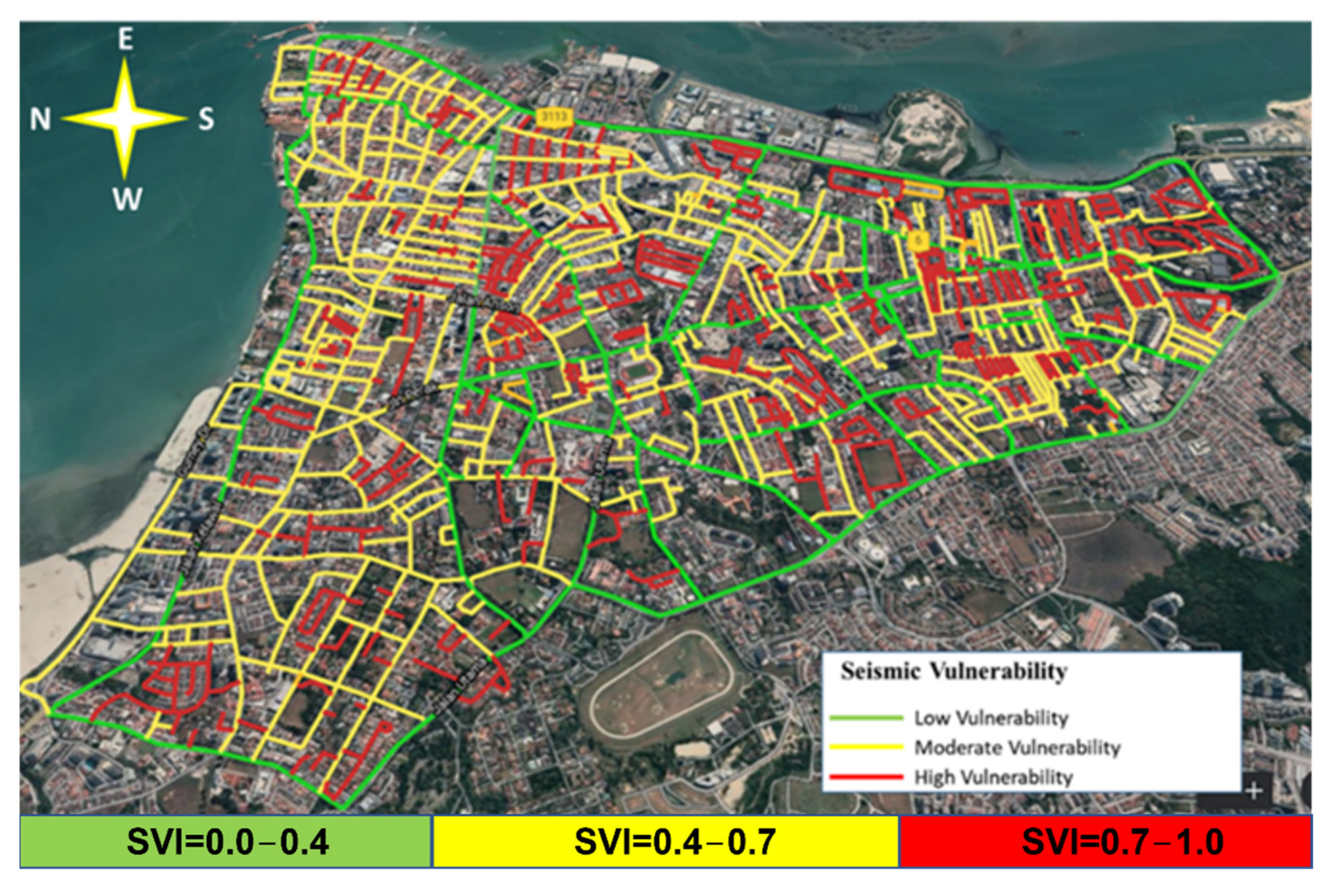
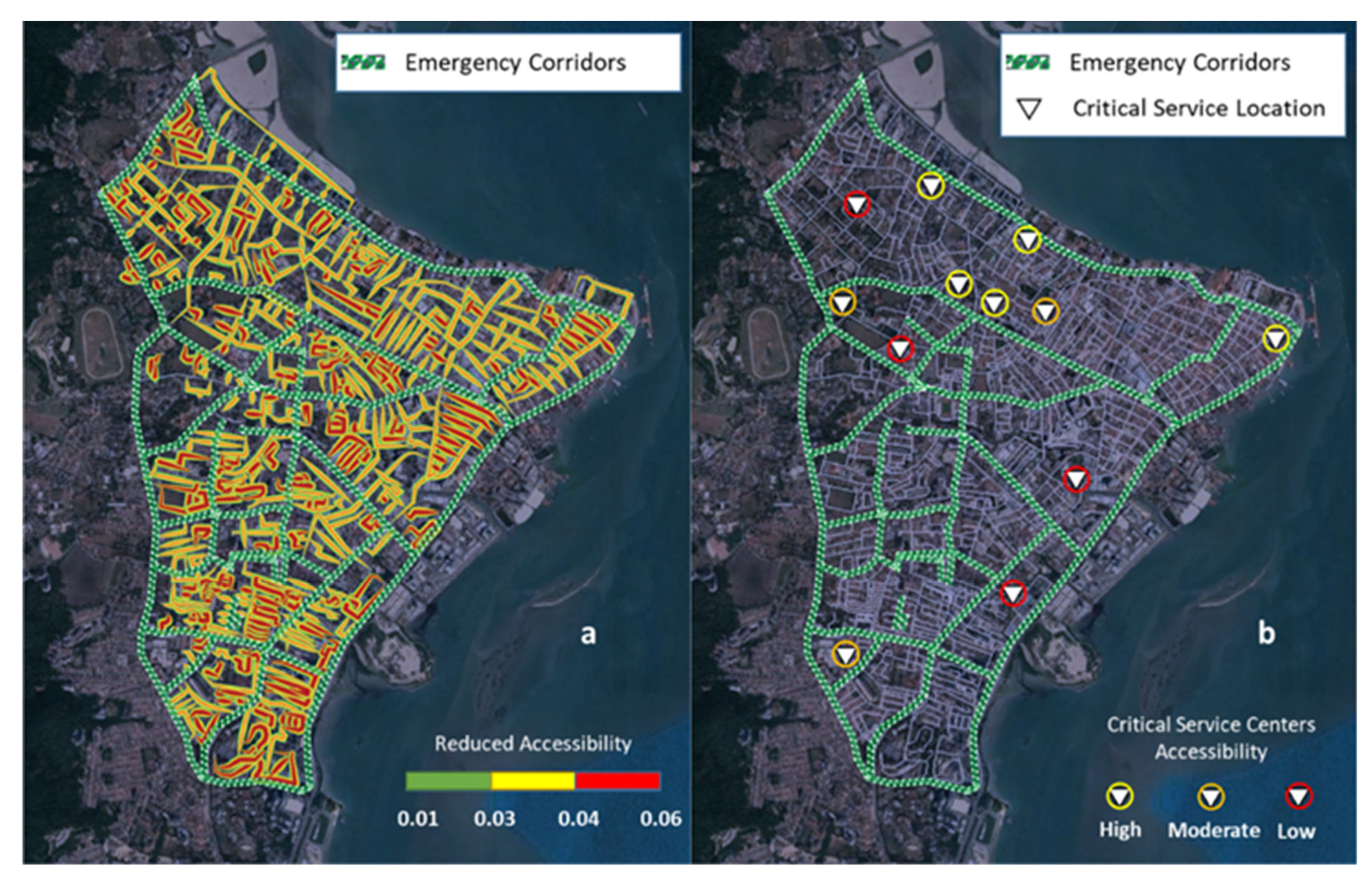
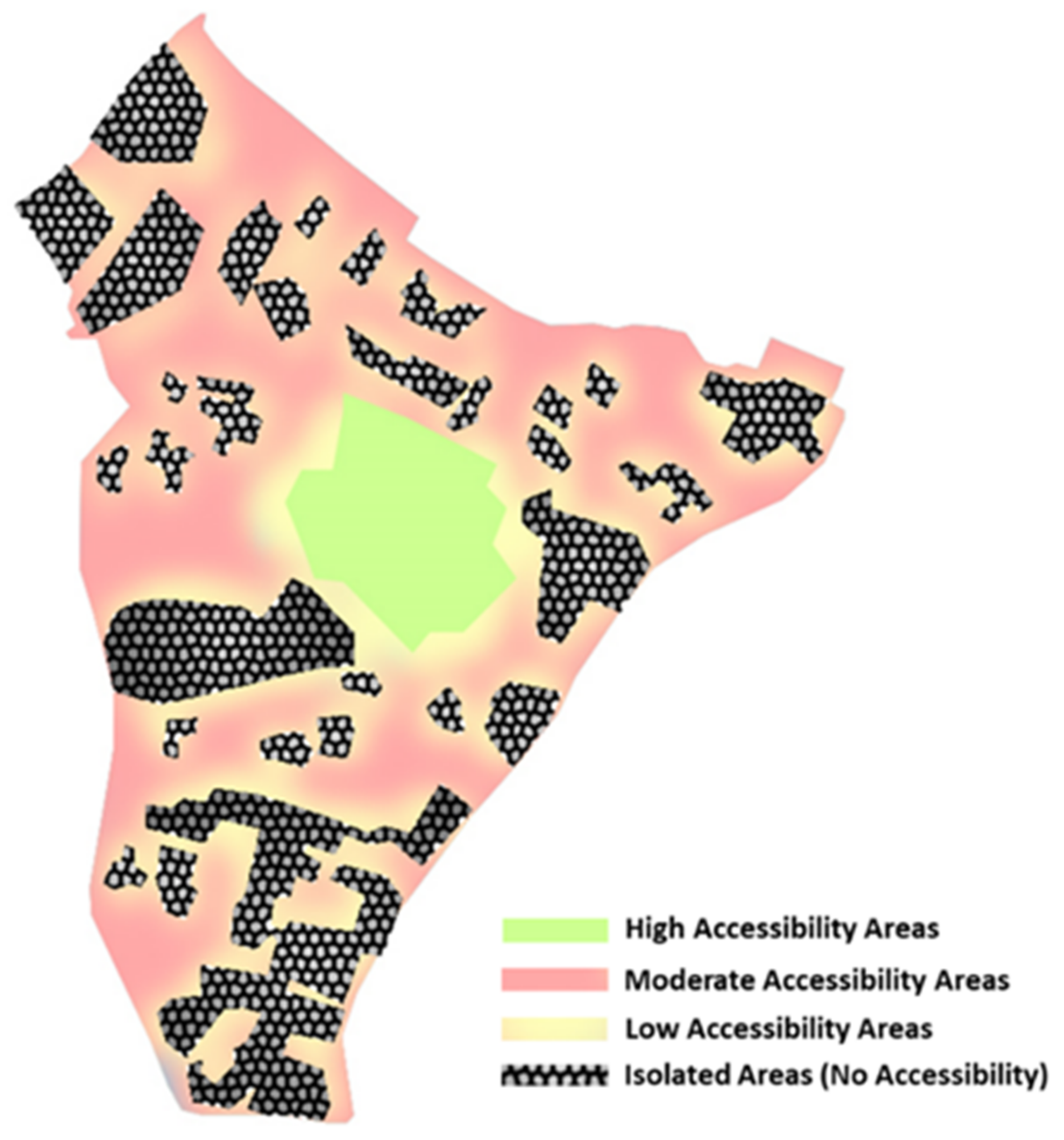
| Investigated Parameter | Defined Vulnerability Class | ||
|---|---|---|---|
| Parameter (P1) | Vulnerability Classes | ||
| Embankment | Low | Moderate | High |
| Height | H > 8 m | 5 m < H ≤ 8 m | 2 m < H ≤ 5 m |
| Parameter (P2) | Vulnerability Classes | ||
| Pavement | Low | Moderate | High |
| Elastic Modulus | 3929 MPa | 10828 MPa | 17,726 MPa |
| Thickness of Pavement | 0.04 m | 0.08 m | 0.14 m |
| Parameter (P3) | Vulnerability Classes | ||
| Ground Condition | Low | Moderate | High |
| Soil Type | Type D | Type C | Type B |
| Parameter (P4) | Vulnerability Classes | ||
| Road Width | Low | Moderate | High |
| Number of Lanes | <2 lanes | =2 lanes | >2 lanes |
| # | Earthquake | Year | Station | PGA (g) | Epicentral Distance (km) | Magnitude (Mw) |
|---|---|---|---|---|---|---|
| 1 | Izmit-Kocaeli, Turkey | 1999 | Nuclear Research Center | 0.181 | 101 | 7.4 |
| 2 | Landers USA | 1992 | San Bernardino, CA | 0.332 | 80 | 7.3 |
| 3 | Superstition Hills, USA | 1987 | Calipatria, CA | 0.252 | 27 | 6.5 |
| 4 | Chi-Chi, Taiwan | 1999 | Taichung | 0.527 | 39 | 7.6 |
| 5 | Loma-Prieta, USA | 1989 | Emeryville, CA | 0.490 | 68 | 7.0 |
| 6 | Northridge, USA | 1994 | Santa Monica, CA | 0.684 | 28 | 6.7 |
| 7 | Ranau, Sabah, Malaysia | 2015 | KKM_HNE | 0.125 | 65 | 6.1 |
| Serviceability | Damage States (DS) | Direct Damages | Indirect Damages |
|---|---|---|---|
| Fully or partially closed due to temporary maintenance and traffic for a few weeks or a few months. | Extensive | Major settlement or offset of the ground (>60 cm) | Considerable debris of collapsed structures |
| Fully closed due to temporary maintenance for a few days. Partially closed to traffic due to permanent maintenance for a few weeks. | Moderate | Moderate settlement or offset of the ground (30 to 60 cm) | Moderate amount of debris of collapsed structures |
| Open to traffic. Reduced speed during maintenance. | Minor | Slight settlement (<30 cm) or offset of the ground | Minor amount of debris of collapsed structures |
| Fully open. | None | - | No damage/Clean road |
| Parameters | S | TB | TC | TD |
|---|---|---|---|---|
| Soil Type (D) | 1.35 | 0.30 | 0.80 | 2.20 |
| Parameters | Percentage of Improvement | |||
|---|---|---|---|---|
| Embankment Height | Number of Lanes | Soil Type | Pavement Strength | |
| 1st Transmission Stage from Low to Moderate | 48.82% | 28.57% | 13.95% | 5.16% |
| 2nd Transmission Stage from Moderate to High | 39.20% | 28.00% | 12.5% | 5.09% |
| Criteria | More Important | Intensity | |
|---|---|---|---|
| A | B | ||
| Embankment Height | Number of Lanes | A | 8 |
| Embankment Height | Soil Type | A | 9 |
| Embankment Height | Pavement Strength | A | 9 |
| Soil Type | Number of Lanes | B | 7 |
| Pavement Strength | Number of Lanes | B | 8 |
| Soil Type | Pavement Strength | A | 2 |
| Category | Scores | |
|---|---|---|
| Embankment height | h ≤ 4 m | 0.2 |
| 4 m < h ≤ 6 m | 0.6 | |
| 6 m < h ≤ 9 m | 0.8 | |
| Number of lanes | lanes | 0.4 |
| lanes | 0.8 | |
| Soil type | Soil type B | 0.2 |
| Soil type C | 0.6 | |
| Soil type D | 1.0 | |
| Pavement strength | High strength | 0.2 |
| Moderate strength | 0.4 | |
| Low Strength | 0.6 |
| Street Number | Embankment Height (m) | Number of Lanes | Soil Type | Pavement Strength | SVI Score |
|---|---|---|---|---|---|
| 1 | 4 | >2 | B | High | 0.242 |
| 2 | 6 | >2 | C | Moderate | 0.552 |
| 3 | 9 | >2 | D | Low | 0.732 |
| 4 | 4 | <2 | B | High | 0.326 |
| 5 | 6 | <2 | C | Moderate | 0.636 |
| 6 | 9 | <2 | D | Low | 0.816 |
| 7 | 4 | >2 | D | Low | 0.342 |
| 8 | 6 | >2 | C | Moderate | 0.552 |
| 9 | 9 | >2 | D | Moderate | 0.726 |
| 10 | 4 | <2 | D | Low | 0.426 |
| 11 | 6 | <2 | C | High | 0.630 |
| 12 | 9 | <2 | B | High | 0.716 |
| SVI Range Classifications | |||||
| SVI = 0.0–0.4 | SVI = 0.4–0.7 | SVI = 0.7–1.0 | |||
Publisher’s Note: MDPI stays neutral with regard to jurisdictional claims in published maps and institutional affiliations. |
© 2022 by the authors. Licensee MDPI, Basel, Switzerland. This article is an open access article distributed under the terms and conditions of the Creative Commons Attribution (CC BY) license (https://creativecommons.org/licenses/by/4.0/).
Share and Cite
El-Maissi, A.M.; Argyroudis, S.A.; Kassem, M.M.; Leong, L.V.; Mohamed Nazri, F. An Integrated Framework for the Quantification of Road Network Seismic Vulnerability and Accessibility to Critical Services. Sustainability 2022, 14, 12474. https://doi.org/10.3390/su141912474
El-Maissi AM, Argyroudis SA, Kassem MM, Leong LV, Mohamed Nazri F. An Integrated Framework for the Quantification of Road Network Seismic Vulnerability and Accessibility to Critical Services. Sustainability. 2022; 14(19):12474. https://doi.org/10.3390/su141912474
Chicago/Turabian StyleEl-Maissi, Ahmad Mohamad, Sotirios A. Argyroudis, Moustafa Moufid Kassem, Lee Vien Leong, and Fadzli Mohamed Nazri. 2022. "An Integrated Framework for the Quantification of Road Network Seismic Vulnerability and Accessibility to Critical Services" Sustainability 14, no. 19: 12474. https://doi.org/10.3390/su141912474








